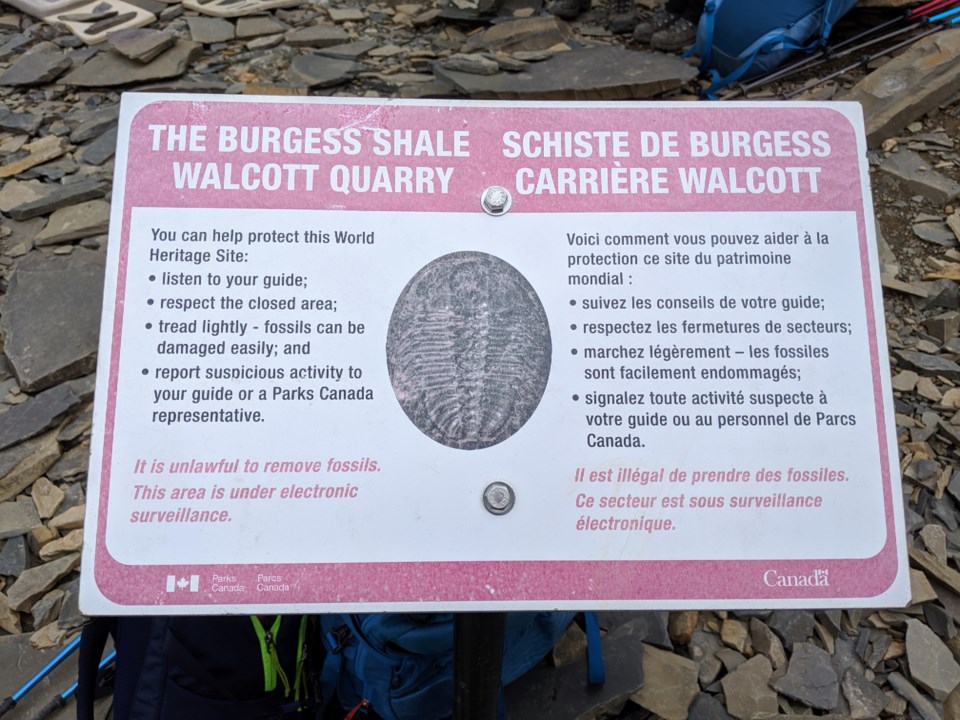KOOTENAY – A Quebec resident was handed a record $20,000 fine for illegally taking fossils from the mountain national parks, including the world-renowned Burgess Shale site.
An investigation involving Parks Canada park wardens, the RCMP, Quebec’s Longueuil Police Department and the Royal Ontario Museum led to the forfeiture of 45 fossils.
The person, who pleaded in Cranbrook Provincial Court on April 27 to two offences, was handed a $20,000 fine and a five-month conditional sentence order, which included a curfew order.
“This is the largest fine that has been levied to date for the removal of fossils from the Burgess Shale, and demonstrates the seriousness of the offence and the importance of this site,” according to a Parks Canada news release on May 12.
In summer 2020, Parks Canada park wardens in Lake Louise received a tip from a member of the public regarding fossil removal from the Burgess Shale.
An investigation during the summer and fall of 2020 led to a search warrant. Park wardens from La Mauricie National Park and the Québec Waterways, and the Longueuil Police Department executed the search warrant at a private residence in the Montreal area on Nov. 20, 2020.
The search recovered 45 fossils, which were identified by an expert from the Royal Ontario Museum as originating from sites within Kootenay, Yoho, and Jasper national parks.
“The majority of the fossils originated from the Burgess Shale Marble Canyon Quarry in Kootenay National Park, an area not currently accessible to the public,” states the news release.
The charges were under the Canada National Parks Act and National Park General Regulations. They included removing natural objects and unlawful traffic in wild animals. The Act refers to both living and dead animals, which is why fossils are covered under this offence.
The money from the fine handed down to the individual will go to the environmental damages fund and be used to support projects that restore nature and conserve wildlife and habitats.
First identified in 1909 in Yoho National Park, the Burgess Shale is widely recognized as one of the most significant fossil sites in the world.
The Burgess Shale contains fossil evidence of some of the earliest complex animals that existed in the oceans more than 505 million years ago and was designated a UNESCO world heritage site in 1980.
Burgess Shale fossils near Stanley Glacier in Kootenay National Park were first noted in 1989 by researchers with the Royal Ontario Museum (ROM. The Marble Canyon Quarry in Kootenay National Park was discovered by researchers from the ROM in 2012.
The ROM has now collected more than 10,000 fossil specimens from this new site. Research continues on this fossil quarry and in the surrounding area.
Each expedition to the Burgess Shale requires a proper Parks Canada research and collection permit and the fossils remain the property of the federal government. The ROM Burgess Shale collection, held in trust for Parks Canada, is actively used for research, teaching, and display.




